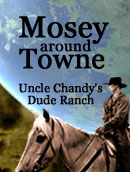

The Color Falls of Mallory’s World 8/01/3132
by James Yoshimora, Republic News
Residents refer to them as “color falls.” Physicists call it aurora borealis. Visitors
describe it as “stunning” and “beautiful.”
Mallory’s World is known to many as the breadbasket of Prefecture III, and certainly
offers travelers many unique opportunities for sight-seeing. Its historic locations and
Succession Wars battlefields, including the canyon where Federated Suns Prince Ian
Davion died in 3013, offer the history buff a wealth of destinations. But for even the
casual traveler, the highlight of a visit to Mallory’s World is the incredible light show
that happens on an almost nightly basis.
Starting shortly after sunset and extending all the way to the presunrise hours, people
all over Mallory’s World view extraordinary light shows in the evening sky. These
light shows encompass all the colors of the spectrum and are often so bright that
streetlights are not necessary. In fact, because of the brilliance of these displays,
residents commonly close their curtains at night rather than during the day.
A number of common solar phenomena power these spectral pageants every night,
though their intensity comes solely from the rare combination of these phenomena.
Astronomers recognized centuries ago that Mallory’s World possesses a strong
magnetic field. That alone, coupled with the system’s high content of gasses and
space dust, produces a visible “ring field” around the planet that seems to rise and fall
every evening. That isn’t even the half of it, though.
The system’s sun is a powerful, hot and, in many respects, unstable star. Storms and
solar flares constantly erupt on the star’s surface, expelling tremendous geysers of
charged particles and gasses into the system. The atmospheric effects on Mallory’s
World, when the planet’s orbit brings the world into the paths of these solar flares,
are simply incredible.
While the effects are visible from all over the planet, sometimes even during the day,
there are a number of spots where the auroral light shows are particularly striking.
Perhaps best known is Craggen’s Peak, a mountaintop within the Grand Fensten
Range, yet there are several better spots. Natives to the world constantly rate the
Semapan Islands as tops, especially with their warm weather and active volcanoes.
True aurora gazers, however, make the trek to Mount Rendell. From there, during the
day they can see one of the planet’s most scenic mountain ranges, covered in green
and white. At night, the rainbow birds take to the skies and seem to dance within the
clouds of light, adding their own shimmering colors to the mesmerizing prism in the
skies.
by James Yoshimora, Republic News
Residents refer to them as “color falls.” Physicists call it aurora borealis. Visitors
describe it as “stunning” and “beautiful.”
Mallory’s World is known to many as the breadbasket of Prefecture III, and certainly
offers travelers many unique opportunities for sight-seeing. Its historic locations and
Succession Wars battlefields, including the canyon where Federated Suns Prince Ian
Davion died in 3013, offer the history buff a wealth of destinations. But for even the
casual traveler, the highlight of a visit to Mallory’s World is the incredible light show
that happens on an almost nightly basis.
Starting shortly after sunset and extending all the way to the presunrise hours, people
all over Mallory’s World view extraordinary light shows in the evening sky. These
light shows encompass all the colors of the spectrum and are often so bright that
streetlights are not necessary. In fact, because of the brilliance of these displays,
residents commonly close their curtains at night rather than during the day.
A number of common solar phenomena power these spectral pageants every night,
though their intensity comes solely from the rare combination of these phenomena.
Astronomers recognized centuries ago that Mallory’s World possesses a strong
magnetic field. That alone, coupled with the system’s high content of gasses and
space dust, produces a visible “ring field” around the planet that seems to rise and fall
every evening. That isn’t even the half of it, though.
The system’s sun is a powerful, hot and, in many respects, unstable star. Storms and
solar flares constantly erupt on the star’s surface, expelling tremendous geysers of
charged particles and gasses into the system. The atmospheric effects on Mallory’s
World, when the planet’s orbit brings the world into the paths of these solar flares,
are simply incredible.
While the effects are visible from all over the planet, sometimes even during the day,
there are a number of spots where the auroral light shows are particularly striking.
Perhaps best known is Craggen’s Peak, a mountaintop within the Grand Fensten
Range, yet there are several better spots. Natives to the world constantly rate the
Semapan Islands as tops, especially with their warm weather and active volcanoes.
True aurora gazers, however, make the trek to Mount Rendell. From there, during the
day they can see one of the planet’s most scenic mountain ranges, covered in green
and white. At night, the rainbow birds take to the skies and seem to dance within the
clouds of light, adding their own shimmering colors to the mesmerizing prism in the
skies.

| August 1, 3132 |
